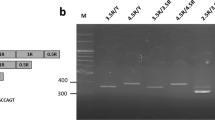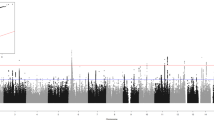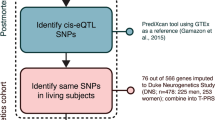Abstract
Emotional behavior is in part heritable and often disrupted in psychopathology. Identification of specific genetic variants that drive this heritability may provide important new insight into molecular and neurobiological mechanisms involved in emotionality. Our results demonstrate that the presynaptic vesicular monoamine transporter 1 (VMAT1) Thr136Ile (rs1390938) polymorphism is functional in vitro, with the Ile allele leading to increased monoamine transport into presynaptic vesicles. Moreover, we show that the Thr136Ile variant predicts differential responses in emotional brain circuits consistent with its effects in vitro. Lastly, deep sequencing of bipolar disorder (BPD) patients and controls identified several rare novel VMAT1 variants. The variant Phe84Ser was only present in individuals with BPD and leads to marked increase monoamine transport in vitro. Taken together, our data show that VMAT1 polymorphisms influence monoamine signaling, the functional response of emotional brain circuits and risk for psychopathology.
This is a preview of subscription content, access via your institution
Access options
Subscribe to this journal
Receive 12 print issues and online access
$259.00 per year
only $21.58 per issue
Buy this article
- Purchase on Springer Link
- Instant access to full article PDF
Prices may be subject to local taxes which are calculated during checkout






Similar content being viewed by others
References
Dalgleish T . The emotional brain. Nat Rev Neurosci 2004; 5: 583–589.
Bouchard TJ, McGue M . Genetic and environmental influences on human psychological differences. J Neurobiol 2003; 54: 4–45.
Bevilacqua L, Goldman D . Genetics of emotion. Trends Cogn Sci 2011; 15: 401–408.
Liu Y, Peter D, Roghani A, Schuldiner S, Privé GG, Eisenberg D et al. A cDNA that suppresses MPP+ toxicity encodes a vesicular amine transporter. Cell 1992; 70: 539–551.
Peter D, Finn JP, Klisak I, Liu Y, Kojis T, Heinzmann C et al. Chromosomal localization of the human vesicular amine transporter genes. Genomics 1993; 18: 720–723.
Erickson JD, Schafer MK, Bonner TI, Eiden LE, Weihe E . Distinct pharmacological properties and distribution in neurons and endocrine cells of two isoforms of the human vesicular monoamine transporter. Proc Natl Acad Sci USA 1996; 93: 5166–5171.
Peter D, Liu Y, Sternini C, de Giorgio R, Brecha N, Edwards RH . Differential expression of two vesicular monoamine transporters. J Neurosci 1995; 15: 6179–6188.
Ibanez-Sandoval O, Tecuapetla F, Unal B, Shah F, Koós T, Tepper JM . Electrophysiological and morphological characteristics and synaptic connectivity of tyrosine hydroxylase-expressing neurons in adult mouse striatum. J Neurosci 2010; 30: 6999–7016.
Ashe KM, Chiu WL, Khalifa AM, Nicolas AN, Brown BL, De Martino RR et al. Vesicular monoamine transporter-1 (VMAT-1) mRNA and immunoreactive proteins in mouse brain. Neuro Endocrinol Lett 2011; 32: 253–258.
Hansson SR, Hoffman BJ, Mezey E . Ontogeny of vesicular monoamine transporter mRNAs VMAT1 and VMAT2. I. The developing rat central nervous system. Brain Res Dev Brain Res 1998; 110: 135–158.
Brunk I, Blex C, Rachakonda S, Höltje M, Winter S, Pahner I et al. The first luminal domain of vesicular monoamine transporters mediates G-protein-dependent regulation of transmitter uptake. J Biol Chem 2006; 281: 33373–33385.
Schildkraut JJ, Kety SS . Biogenic amines and emotion. Science (New York, NY) 1967; 156: 21–37.
Goodwin FK, Bunney WE . Depressions following reserpine: a reevaluation. Semin Psychiatry 1971; 3: 435–448.
Bant WP . Antihypertensive drugs and depression: a reappraisal. Psychol Med 1978; 8: 275–283.
Widmer RB . Reserpine: the maligned antihypertensive drug. J Fam Pract 1985; 20: 81–83.
Wang YM, Gainetdinov RR, Fumagalli F, Xu F, Jones SR, Bock CB et al. Knockout of the vesicular monoamine transporter 2 gene results in neonatal death and supersensitivity to cocaine and amphetamine. Neuron 1997; 19: 1285–1296.
Takahashi N, Miner LL, Sora I, Ujike H, Revay RS, Kostic V et al. VMAT2 knockout mice: heterozygotes display reduced amphetamine-conditioned reward, enhanced amphetamine locomotion, and enhanced MPTP toxicity. Proc Natl Acad Sci USA 1997; 94: 9938–9943.
Fon EA, Pothos EN, Sun BC, Killeen N, Sulzer D, Edwards RH . Vesicular transport regulates monoamine storage and release but is not essential for amphetamine action. Neuron 1997; 19: 1271–1283.
Fumagalli F, Gainetdinov RR, Wang YM, Valenzano KJ, Miller GW, Caron MG . Increased methamphetamine neurotoxicity in heterozygous vesicular monoamine transporter 2 knock-out mice. J Neurosci 1999; 19: 2424–2431.
Narboux-Neme N, Sagné C, Doly S, Diaz SL, Martin CB, Angenard G et al. Severe serotonin depletion after conditional deletion of the vesicular monoamine transporter 2 gene in serotonin neurons: neural and behavioral consequences. Neuropsychopharmacology 2011; 36: 2538–2550.
Taylor TN, Caudle WM, Miller GW . VMAT2-Deficient mice display nigral and extranigral pathology and motor and nonmotor symptoms of Parkinson’s disease. Parkinson’s Disease 2011; 2011.
Fukui M, Rodriguiz RM, Zhou J, Jiang SX, Phillips LE, Caron MG et al. Vmat2 heterozygous mutant mice display a depressive-like phenotype. J Neurosci 2007; 27: 10520–10529.
Richards M, Iijima Y, Kondo H, Shizuno T, Hori H, Arima K et al. Association study of the vesicular monoamine transporter 1 (VMAT1) gene with schizophrenia in a Japanese population. Behav Brain Funct 2006; 2: 39.
Bly M . Mutation in the vesicular monoamine gene, SLC18A1, associated with schizophrenia. Schizophr Res 2005; 78: 337–338.
Chen SF, Chen CH, Chen JY, Wang YC, Lai IC, Liou YJ et al. Support for association of the A277C single nucleotide polymorphism in human vesicular monoamine transporter 1 gene with schizophrenia. Schizophr Res 2007; 90: 363–365.
Lohoff FW, Weller AE, Bloch PJ, Buono RJ, Doyle GA, Ferraro TN et al. Association between polymorphisms in the vesicular monoamine transporter 1 gene (VMAT1/SLC18A1) on chromosome 8p and schizophrenia. Neuropsychobiology 2008; 57: 55–60.
Lohoff FW, Dahl JP, Ferraro TN, Arnold SE, Gallinat J, Sander T et al. Variations in the vesicular monoamine transporter 1 gene (VMAT1/SLC18A1) are associated with bipolar I disorder. Neuropsychopharmacology 2006; 31: 2739–2747.
Need AC, Keefe RS, Ge D, Grossman I, Dickson S, McEvoy JP et al. Pharmacogenetics of antipsychotic response in the CATIE trial: a candidate gene analysis. Eur J Hum Genet 2009; 17: 946–957.
Lohoff FW, Lautenschlager M, Mohr J, Ferraro TN, Sander T, Gallinat J et al. Association between variation in the vesicular monoamine transporter 1 gene on chromosome 8p and anxiety-related personality traits. Neurosci Lett 2008; 434: 41–45.
Green EK, Grozeva D, Jones I, Jones L, Kirov G, Caesar S et al. The bipolar disorder risk allele at CACNA1C also confers risk of recurrent major depression and of schizophrenia. Mol Psychiatry 2010; 15: 1016–1022.
Craddock N, O’Donovan MC, Owen MJ . Genes for schizophrenia and bipolar disorder? Implications for psychiatric nosology. Schizophr Bull 2005; 32: 9–16.
Craddock N, Owen MJ . The Kraepelinian dichotomy—going, going. but still not gone. Br J Psychiatry 2010; 196: 92–95.
Erickson JD, Eiden LE, Hoffman BJ . Expression cloning of a reserpine-sensitive vesicular monoamine transporter. Proc Natl Acad Sci USA 1992; 89: 10993–10997.
Essand M, Vikman S, Grawé J, Gedda L, Hellberg C, Oberg K et al. Identification and characterization of a novel splicing variant of vesicular monoamine transporter 1. J Mol Endocrinol 2005; 35: 489–501.
Mickey BJ, Zhou Z, Heitzeg MM, Heinz E, Hodgkinson CA, Hsu DT et al. Emotion processing, major depression, and functional genetic variation of neuropeptide Y. Arch Gen Psychiatry 2011; 68: 158–166.
Hsu DT, Langenecker SA, Kennedy SE, Zubieta JK, Heitzeg MM . fMRI BOLD responses to negative stimuli in the prefrontal cortex are dependent on levels of recent negative life stress in major depressive disorder. Psychiat Res 2010; 183: 202–208.
Heitzeg MM, Nigg JT, Yau WY, Zubieta JK, Zucker RA . Affective circuitry and risk for alcoholism in late adolescence: differences in frontostriatal responses between vulnerable and resilient children of alcoholic parents. Alcohol Clin Exp Res 2008; 32: 414–426.
Bradley MM, Lang PJ . Affective Norms for English Words (ANEW): Stimuli, Instruction Manual and Affective Ratings. The Center for Research in Psychophysiology, University of Florida: Gainesville, FL, 1999.
Kraemer HC, Thiemann S . How Many Subjects? Statistical Power Analysis in Research. Sage Publications: Newbury Park, 1987.
Lancaster JL, Woldorff MG, Parsons LM, Liotti M, Freitas CS, Rainey L et al. Automated Talairach atlas labels for functional brain mapping. Hum Brain Mapp 2000; 10: 120–131.
Maldjian JA, Laurienti PJ, Kraft RA, Burdette JH . An automated method for neuroanatomic and cytoarchitectonic atlas-based interrogation of fMRI data sets. NeuroImage 2003; 19: 1233–1239.
Bogdan R, Hyde LW, Hariri AR . A neurogenetics approach to understanding individual differences in brain, behavior, and risk for psychopathology. Mol Psychiatry, advance online publication, 22 May 2012; doi:10.1038/mp.2012.35 (e-pub ahead of print).
Whitfield-Gabrieli S, Thermenos HW, Milanovic S, Tsuang MT, Faraone SV, McCarley RW et al. Hyperactivity and hyperconnectivity of the default network in schizophrenia and in first-degree relatives of persons with schizophrenia. Proc Natl Acad Sci USA 2009; 106: 1279–1284.
Tzourio-Mazoyer N, Landeau B, Papathanassiou D, Crivello F, Etard O, Delcroix N et al. Automated anatomical labeling of activations in SPM using a macroscopic anatomical parcellation of the MNI MRI single-subject brain. NeuroImage 2002; 15: 273–289.
Bevilacqua L, Doly S, Kaprio J, Yuan Q, Tikkanen R, Paunio T et al. A population-specific HTR2B stop codon predisposes to severe impulsivity. Nature 2010; 468: 1061–1066.
Altshuler L, Bookheimer S, Proenza MA, Townsend J, Sabb F, Firestine A et al. Increased amygdala activation during mania: a functional magnetic resonance imaging study. Am J Psychiatry 2005; 162: 1211–1213.
Milad MR, Pitman RK, Ellis CB, Gold AL, Shin LM, Lasko NB et al. Neurobiological basis of failure to recall extinction memory in posttraumatic stress disorder. Biol Psychiatry 2009; 66: 1075–1082.
Costafreda SG, Brammer MJ, David AS, Fu CH . Predictors of amygdala activation during the processing of emotional stimuli: a meta-analysis of 385 PET and fMRI studies. Brain Res Rev 2008; 58: 57–70.
Kim MJ, Gee DG, Loucks RA, Davis FC, Whalen PJ . Anxiety dissociates dorsal and ventral medial prefrontal cortex functional connectivity with the amygdala at rest. Cereb Cortex 2011; 21: 1667–1673.
Likhtik E, Pelletier JG, Paz R, Pare D . Prefrontal control of the amygdala. J Neurosci 2005; 25: 7429–7437.
Caspi A, Hariri AR, Holmes A, Uher R, Moffitt TE . Genetic sensitivity to the environment: the case of the serotonin transporter gene and its implications for studying complex diseases and traits. Am J Psychiatry 2010; 167: 509–527.
Buckholtz JW, Callicott JH, Kolachana B, Hariri AR, Goldberg TE, Genderson M et al. Genetic variation in MAOA modulates ventromedial prefrontal circuitry mediating individual differences in human personality. Mol Psychiatry 2008; 13: 313–324.
Lawrence NS, Williams AM, Surguladze S, Giampietro V, Brammer MJ, Andrew C et al. Subcortical and ventral prefrontal cortical neural responses to facial expressions distinguish patients with bipolar disorder and major depression. Biol Psychiatry 2004; 55: 578–587.
Bora E, Yucel M, Pantelis C . Cognitive impairment in schizophrenia and affective psychoses: implications for DSM-V criteria and beyond. Schizophr Bull 2010; 36: 36–42.
Jabben N, Arts B, van Os J, Krabbendam L . Neurocognitive functioning as intermediary phenotype and predictor of psychosocial functioning across the psychosis continuum: studies in schizophrenia and bipolar disorder. J Clin Psychiatry 2010; 71: 764–774.
Shyn SI, Shi J, Kraft JB, Potash JB, Knowles JA, Weissman MM et al. Novel loci for major depression identified by genome-wide association study of sequenced treatment alternatives to relieve depression and meta-analysis of three studies. Mol Psychiatry 2009; 16: 202–215.
Pinheiro AP, Bulik CM, Thornton LM, Sullivan PF, Root TL, Bloss CS et al. Association study of 182 candidate genes in anorexia nervosa. Am J Med Genet B Neuropsychiatr Genet 2010; 153B: 1070–1080.
Braff DL, Greenwood TA, Swerdlow NR, Light GA, Schork NJ . Advances in endophenotyping schizophrenia. World Psychiatry 2008; 7: 11–18.
Gottesman II, Gould TD . The endophenotype concept in psychiatry: etymology and strategic intentions. Am J Psychiatry 2003; 160: 636–645.
Acknowledgements
This work was supported by the Center for Neurobiology and Behavior, Department of Psychiatry, University of Pennsylvania. Financial support is gratefully acknowledged from National Institutes of Health Grants (NIH K08MH080372 to FWL), NCRR (UL1 RR 024986), NIMH (P01 MH 42251, R25 MH 6374 and K23 MH 074459), NIDA (R01 DA 016423 and R01 DA 022520, and 026222 and 031579) and the Phil F Jenkins Research Fund.
Author information
Authors and Affiliations
Corresponding author
Ethics declarations
Competing interests
Dr Lohoff declares that he is named as one of the inventors of a patent involving human genetic VMAT1 variants (US Patent No. 7 736 852). Within the 3-year period before submission of the manuscript, Dr Mickey has received salary support from St Jude Medical for research unrelated to this manuscript, and Dr Zubieta has served as a paid consultant for Eli Lilly, Johnson & Johnson, Merck and Abbott for work unrelated to this manuscript. All remaining authors declare no conflict of interest.
Additional information
Supplementary Information accompanies the paper on the Molecular Psychiatry website
Supplementary information
Rights and permissions
About this article
Cite this article
Lohoff, F., Hodge, R., Narasimhan, S. et al. Functional genetic variants in the vesicular monoamine transporter 1 modulate emotion processing. Mol Psychiatry 19, 129–139 (2014). https://doi.org/10.1038/mp.2012.193
Received:
Revised:
Accepted:
Published:
Issue Date:
DOI: https://doi.org/10.1038/mp.2012.193
Keywords
This article is cited by
-
Neuroimaging Genomics a Predictor of Major Depressive Disorder (MDD)
Molecular Neurobiology (2023)
-
Association Study of VMAT1 Polymorphisms and Suicide Behavior
Journal of Molecular Neuroscience (2018)
-
Impulsive alcohol-related risk-behavior and emotional dysregulation among individuals with a serotonin 2B receptor stop codon
Translational Psychiatry (2015)
-
Human amygdala volume is predicted by common DNA variation in the stathmin and serotonin transporter genes
Translational Psychiatry (2013)



